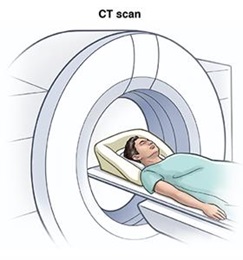Lewy Body Dementia (LBD)
What You Need to Know
- Lewy body dementia (LBD) is a form of progressive dementia that affects a person’s ability to think, reason, and process information.
- Diagnosing Lewy body dementia can be challenging; an estimated 1.4 million Americans are living with the disease.
- LBD has three features that distinguish it from other forms of dementia:
- Fluctuating effects on mental functioning, particularly alertness and attention, which may resemble delirium
- Recurrent visual hallucinations
- Parkinson-like movement symptoms, such as rigidity and lack of spontaneous movement.
- Interventions used in other forms of dementia may help people living with Lewy body dementia. It’s important to work with a specialist familiar with the many aspects of the disease.
Lewy bodies are clumps of abnormal protein particles that, for reasons that are not fully understood, accumulate in the brain. These deposits cause a form of dementia called Lewy body dementia, or LBD — which is what the late actor and comedian Robin Williams suffered from.
LBD is not the same as Parkinson’s, but the two are closely related: LBD causes some or all of the motor symptoms of Parkinson’s. More than 1 million people in the U.S. are affected by Lewy body dementia, according to the Lewy Body Dementia Association.
The Link to Parkinson’s Disease
Most people with Parkinson’s disease (with the exception of the very small subset of Parkinson’s patients whose condition resulted from a specific genetic mutation) have Lewy bodies in their brains. It’s these clusters that cause some or all of the motor symptoms of Parkinson’s disease, as well as memory or cognitive problems, visual hallucinations, and problems with alertness.
We rarely know if a living patient has Lewy bodies with certainty, however. It’s not until an autopsy that they can be seen, says Liana Rosenthal, M.D., assistant professor of neurology at the Johns Hopkins University School of Medicine. “If we see Lewy bodies in someone’s brain during an autopsy, that’s considered a ‘pathologic certainty’ of Parkinson’s disease,” she says.
As with Parkinson’s, Lewy body dementia is associated with a depletion of certain neurotransmitters in the brain. These are:
- Dopamine: This neurotransmitter helps transmit signals that control muscle movement. When the accumulation of Lewy bodies blocks dopamine’s production and transmission, the result is the hallmark movement issues of Parkinson’s disease.
- Acetylcholine: This neurotransmitter does its work in the parts of the brain responsible for memory, thinking and processing. When Lewy bodies build up in these areas, they interfere with acetylcholine, causing symptoms of dementia.
What Does Lewy Body Dementia Look Like?
Lewy body dementia affects a person’s ability to think and process information — and it can negatively impact memory and alter personality. Though it shares aspects of other forms of dementia, there are distinct hallmarks of LBD. Lewy body dementia symptoms include:
- Fluctuating attention/alertness: These shifts can last hours or go on for days. The person may stare into space, appear lethargic or drowsy, and have hard-to-understand speech, appearing a lot like delirium. At other times, the person may have much more clarity of thought.
- Visual hallucinations: Often, these are very detailed hallucinations and visions of people or animals, and they can recur.
- Movement disorders: Parkinson’s-like movement issues, such as muscle rigidity, tremors, falls, or a shuffling gait or way of walking, may occur.
Treatment for Lewy Body Dementia
Treating LBD has significant overlap with Parkinson’s disease treatment, but not all Lewy body dementia patients can tolerate the drugs used to treat Parkinson’s. Physical and occupational therapy can go a long way toward helping patients cope with physical symptoms.





